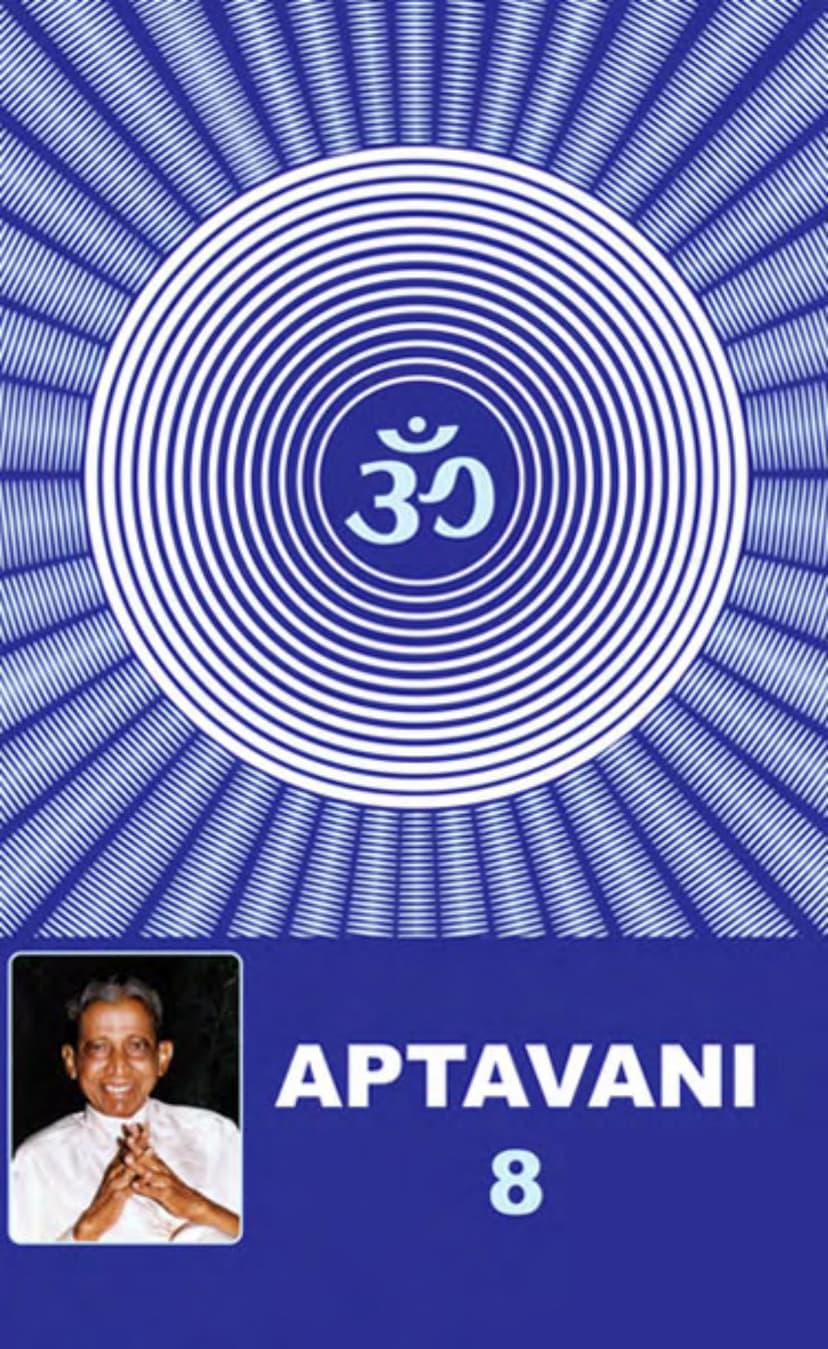Aptavani Shreni 08
Added to library: September 1, 2025

Summary
Here's a comprehensive summary of the Jain text "Aptavani Shreni 08" by Dada Bhagwan, based on the provided pages:
Core Theme: The Nature of the Self (Atma) and the Path to Self-Realization
This book is a collection of dialogues between Dada Bhagwan (a Self-realized being, also known as Dadashri) and seekers, delving into profound spiritual questions about the nature of the Self (Atma), God, the universe, karma, and liberation (moksha). The central message revolves around the concept of Akram Vignan, a step-less, direct path to Self-realization, facilitated by the grace of a living Gnani Purush.
Key Concepts and Teachings:
-
The Atma (Self): The Atma is described as the eternal, unchanging, pure, and blissful Self, which is distinct from the body, mind, and ego. It is the "life energy" or "chetan" and is the true essence of a being. It is formless (nirakari), yet has an innate nature of infinite Knowledge (anant Gnan), Vision (anant Darshan), Energy (anant shakti), and bliss (anant sukh). The Atma is not omnipresent in the way often misunderstood; its light illuminates, but the Atma itself resides in its own unique space. Crucially, the Atma is not the doer or sufferer of actions (karta-bhokta).
-
The Ego (Ahamkar) and the Non-Self (Anatma/Pudgal): The root cause of suffering and bondage is the ego, the wrong belief of "I am Chandubhai" (or one's own name) and the identification with the body and its functions. The ego is described as a mechanical self, influenced by worldly interactions and karma. The non-Self complex (pudgal) refers to everything else besides the Atma – the body, mind, speech, senses, and the external world. The interaction and mistaken identification with these non-Self elements creates illusion (bhranti) and karma.
-
Akram Vignan: The Step-less Path: This path, as expounded by Dada Bhagwan, offers a direct and effortless route to Self-realization. It bypasses the arduous, step-by-step processes of traditional paths (Kramic marg). It is described as an "elevator path" or a shortcut, where the Gnani Purush directly imparts Self-knowledge (Atmagnan) and provides the correct vision (drashti).
-
The Gnani Purush: The manifest, living Gnani Purush is essential for attaining true Self-realization. He has realized his own Self and lives in the state of the Self, functioning as an instrument of God (Dada Bhagwan). He possesses Absolute Knowledge (Keval Gnan) and can directly impart the knowledge of the Self, thereby destroying demerit karma and dispelling ignorance. Meeting and abiding by the directives (Agnas) of the Gnani Purush is paramount.
-
Karma and Rebirth: Karma is explained as a plan (yojana) that materializes over lifetimes. Birth and death are cycles of the body and ego, not the Atma, which is eternal. The nature of one's next birth is determined by the karmas accumulated and the predominant intentions (bhaav) formed, especially in the human life-form, which offers the unique opportunity for Self-realization. The cycle of rebirth can only end with Self-realization.
-
Duality vs. Non-Duality (Dwaita vs. Adwaita): The text clarifies that true non-duality (Adwaita) is not about negating duality. Non-duality is dependent on duality and arises when the differentiating intellect (bhed buddhi) that creates distinctions between the Self and non-Self is transcended. The ultimate state is beyond both duality and non-duality (dwandvatita).
-
The Nature of the World: The world is not an illusion (mithya) but a relative truth (satya), governed by scientific circumstantial evidence (vyavasthit shakti). The fundamental elements (tattva) like the Atma are eternal (avinashi), while their circumstances (avastha) and phases (paryaya) are temporary (vinashi). The Gnani Purush sees the world as it is, without any distortion.
-
The Goal of Life: The ultimate purpose of human life is to attain liberation (moksha). This is achieved through Self-realization, which involves understanding the true nature of the Self and differentiating it from the non-Self.
-
Experiential Knowledge: The book emphasizes that true spiritual understanding comes from direct experience (anubhav) and realization, not just intellectual knowledge (shabda gnan) from scriptures. The Gnani Purush facilitates this direct experience.
-
The Importance of Correct Understanding: The text highlights how misinterpretations of scriptures and spiritual concepts have led to confusion. The teachings of Dada Bhagwan aim to provide clear, scientific, and experiential understanding, free from dogma and illusion.
Key Takeaways for the Seeker:
- Recognize the Illusion: Understand that the identification with the body, name, and ego ("I am Chandubhai") is an illusion (bhranti).
- Seek the Gnani Purush: The direct path to Self-realization is through meeting and receiving grace from a living Gnani Purush.
- Abide by the Agnas: Follow the five directives (Agnas) given by the Gnani Purush to maintain spiritual progress and avoid further karma.
- Cultivate Humility and 'I Don't Know': Approach the Gnani with humility and an attitude of "I don't know anything," which opens the door for receiving true knowledge.
- Shift Vision: The ultimate goal is to shift one's vision from the temporary and illusory to the permanent and real Self.
- Experience the Bliss of the Self: True liberation is the constant experience of the Atma's inherent bliss, independent of external circumstances.
In essence, Aptavani Shreni 08 provides a profound discourse on the nature of reality, the self, and the scientifically verifiable path to liberation, emphasizing the critical role of the Gnani Purush in guiding the seeker to ultimate freedom.